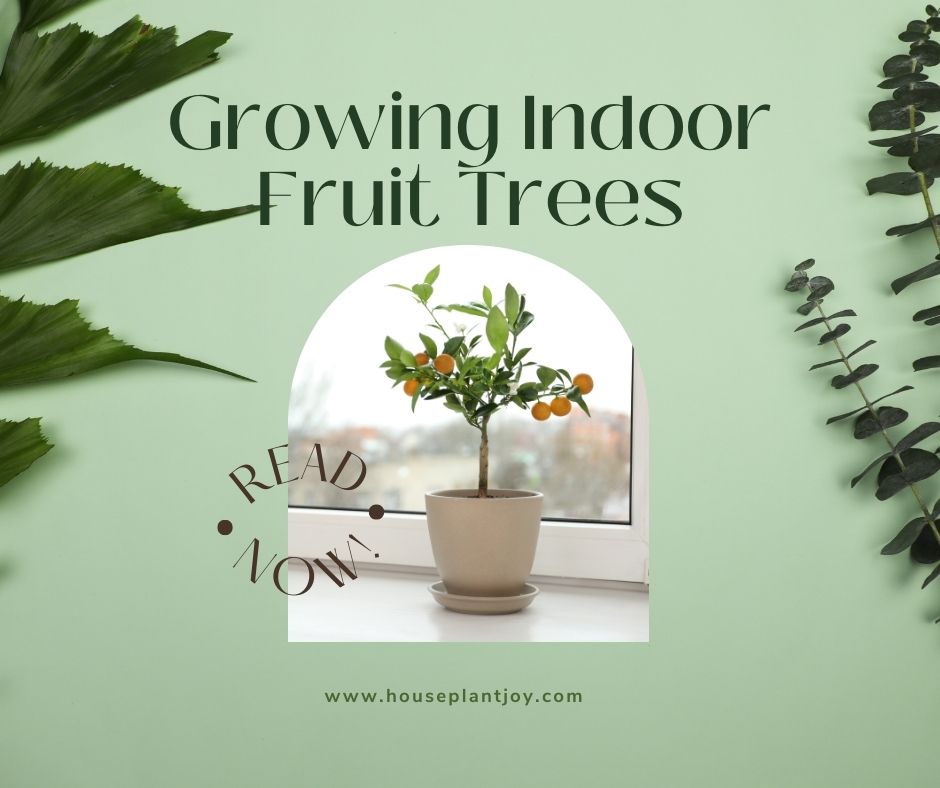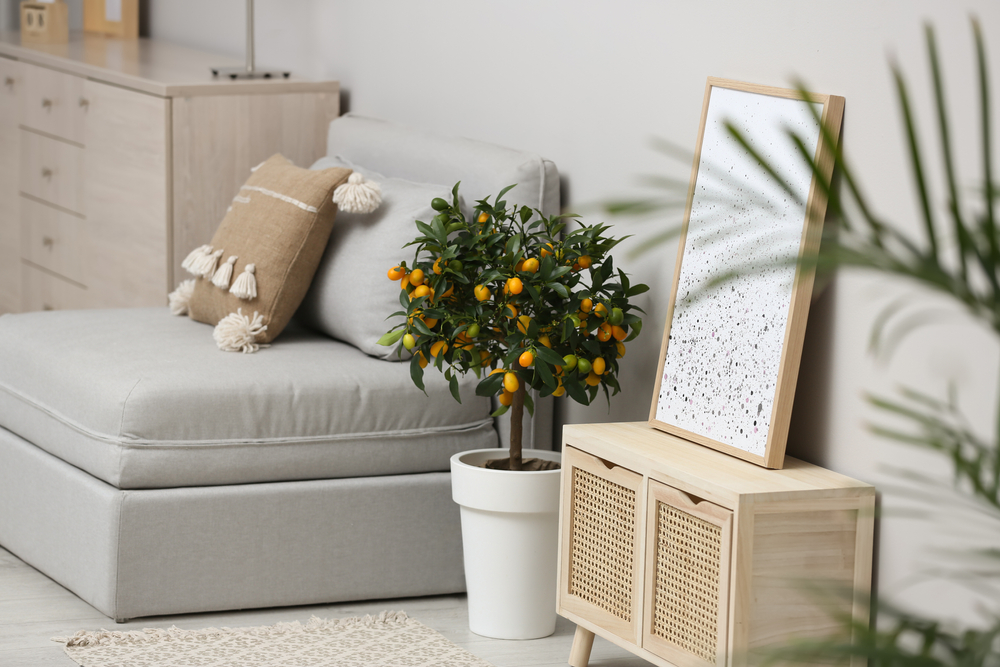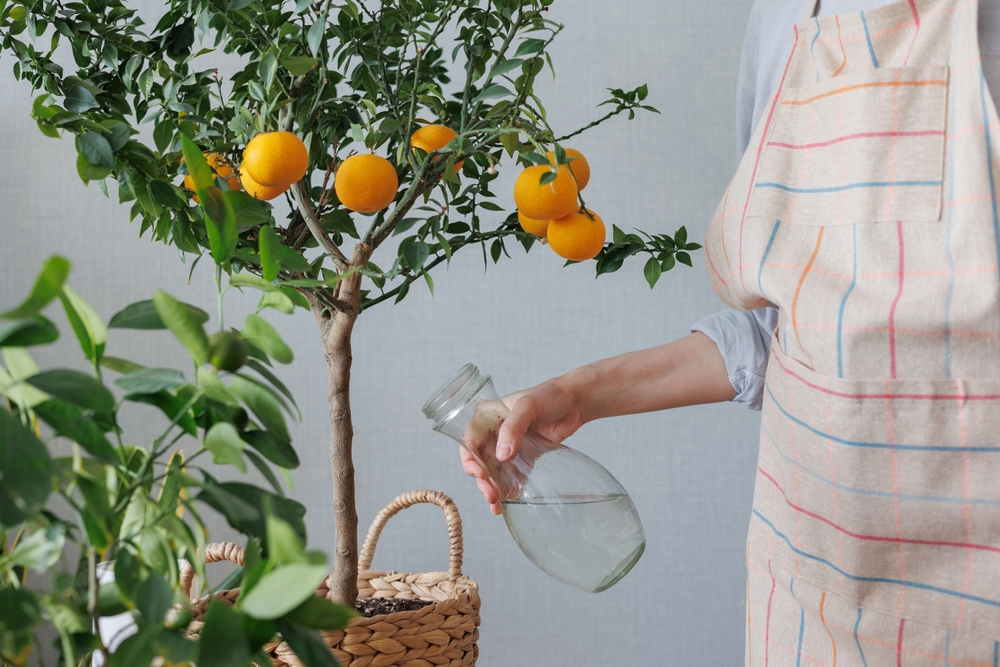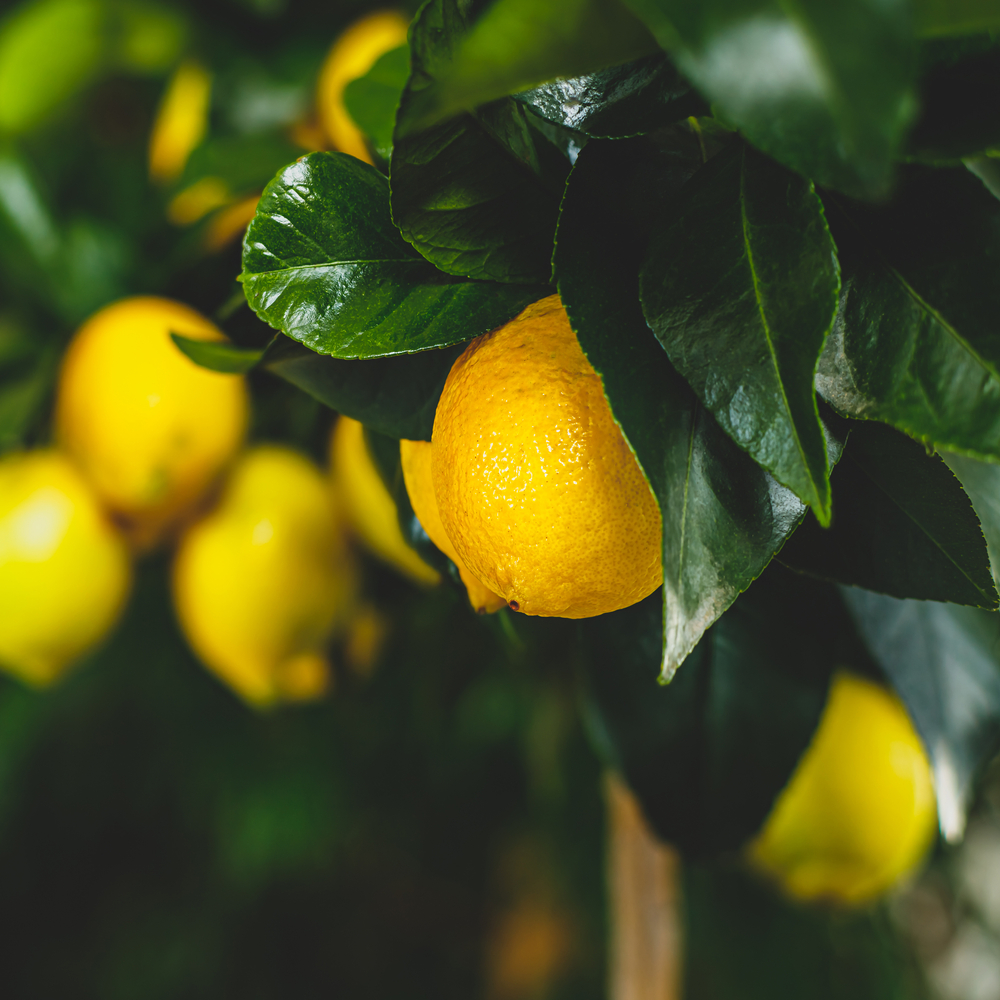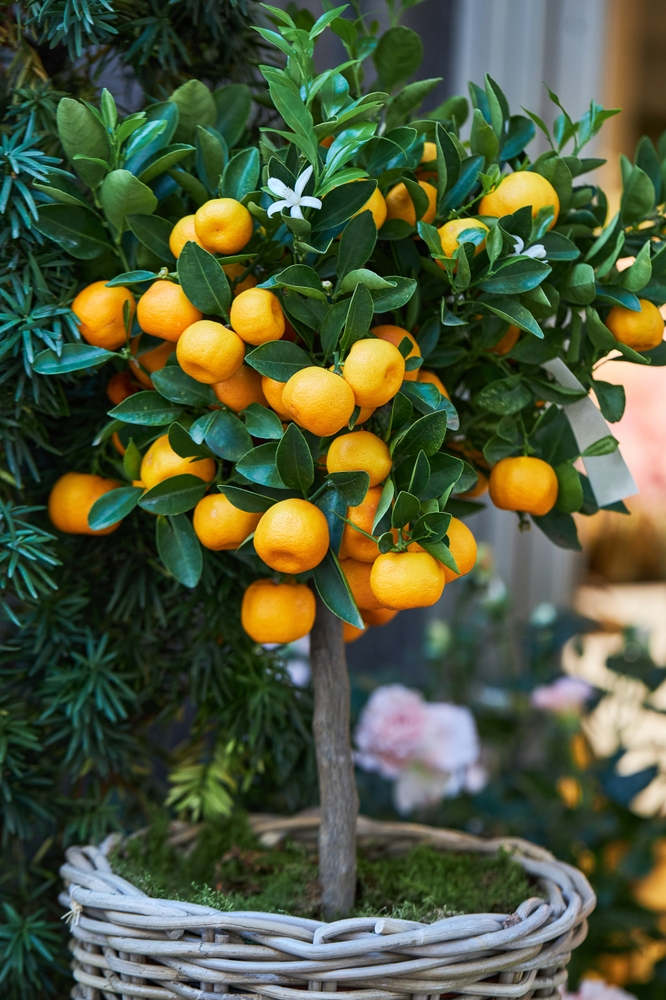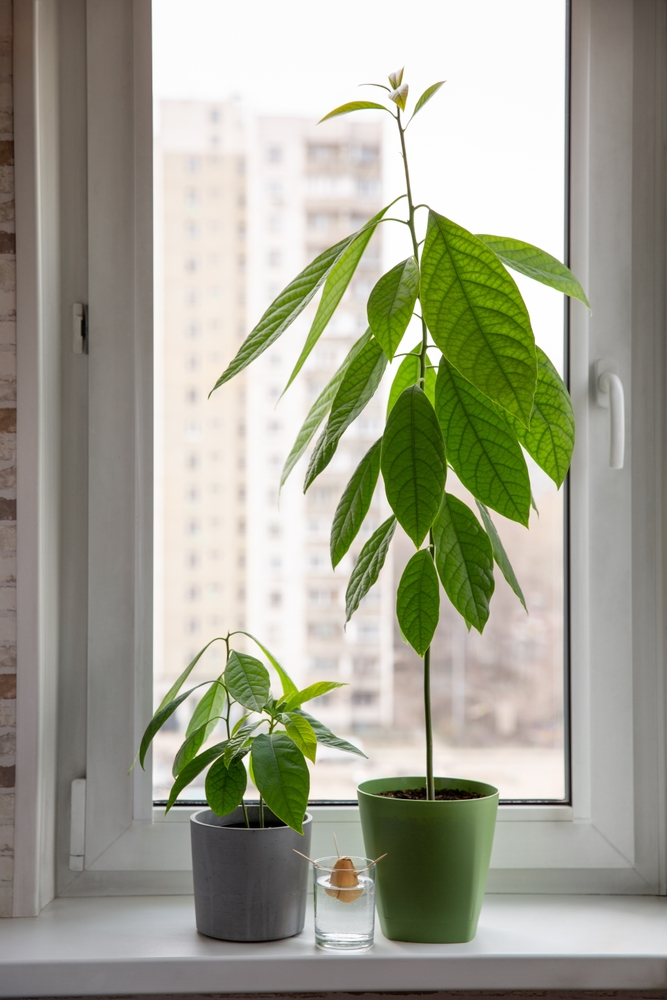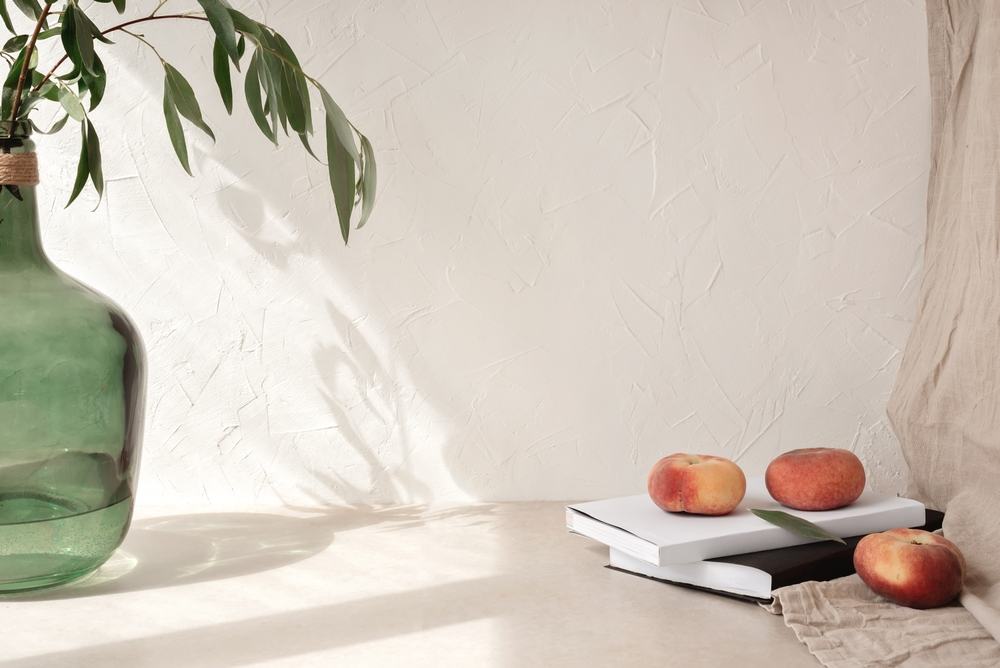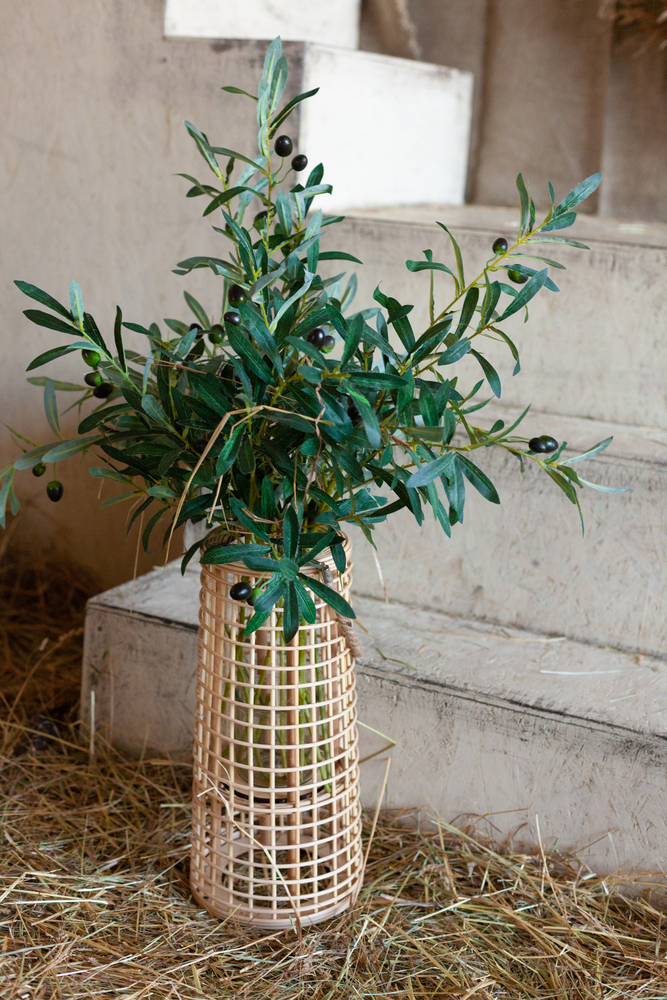HousePlantJoy is supported by our audience. When you purchase through one of our links, we may earn a small affiliate commission. As an Amazon Associate I earn from qualifying purchases. Your cost is not affected.
==================
Imagine having your indoor garden to pick fresh, delicious fruits from your living room or kitchen. This dream can become a reality with the proper selection of indoor fruit trees. The benefits of growing fruit trees indoors are not limited to delicious snacks; they also provide beautiful, fragrant foliage and purify the air in your home. This guide will explore popular indoor fruit tree varieties and their care requirements to help you start your indoor orchard.
Key Takeaways
- Choose suitable indoor fruit trees for fragrant flowers and fresh fruit year-round.
- Essential care, such as adequate light, appropriate watering, and regular pruning, will ensure the successful growing of tasty fruits like Meyer lemons or Calamondin oranges.
- Enjoy a wide selection of other tropical treats like dwarf banana trees, avocado trees, figs, peaches, or kumquats with proper care and attention!
Choosing the Right Indoor Fruit Trees
Several factors, such as size, light requirements, and fruit production, should be considered when selecting indoor fruit trees. Some popular indoor fruit trees include:
- Dwarf fruit trees – These are often the best choice for indoor growth, as they are grafted onto specific rootstock that keeps them small and compact while still producing edible fruit.
- Citrus trees – Meyer lemon trees and calamondin oranges are popular choices.
- Fig trees – Indoor fig trees are known for their easy care and delicious, sweet fruit.
- Dwarf bananas – These small banana plants fit indoors and yield tasty, miniature bananas.
- Lime trees – Indoor lime trees offer zesty fruits and thrive with minimal care.
- Avocado trees – A popular indoor option for fresh, homegrown avocados.
- Peach trees – Peach trees can be grown indoors, producing juicy fruits in the right conditions.
I think that making surecritical your indoor fruit trees receive the appropriate amount of sunlight is key to their care. Most fruit trees, including citrus plants and fig trees, require ample sunlight to thrive. Ideally, it would be best to critical your fruit trees near a south-facing window or supplement their natural light with a grow light. Selecting suitable potting soil and adhering to the correct watering schedule for your specific fruit tree variety is also vital.
When shopping for indoor fruit trees, you can find dwarf varieties at local nurseries, home and garden chains, and even online. Once you’ve selected your tree, place it in a warm, sheltered spot away from drafty doors and windows to ensure optimal growth. With the proper care and attention, your growing fruit trees will reward you with fragrant flowers and fresh indoor fruit year-round.
Essential Care for Indoor Fruit Trees
Several steps are involved in caring for indoor fruit trees to guarantee their health and production. First and foremost, your fruit trees will need plenty of bright, indirect sunlight. You can supplement natural light with a grow light, especially during winter when sunlight is limited. A south-facing window or a double-exposure room is ideal for indoor fruit trees like citrus and fig trees. The health of your indoor fruit trees heavily depends on proper watering.
Here Are Some Tips to Keep in Mind:
- Most fruit trees will benefit from regular watering, with the frequency depending on the season and the specific tree variety.
- Use well-draining soil and a pot with drainage holes. This helps prevent overwatering and root rot.
- Maintaining a humid environment is also crucial, particularly for tropical fruit trees like citrus and dwarf bananas.
By following these guidelines, you can ensure the proper watering of your indoor fruit trees.
Regular pruning is another essential aspect of indoor fruit tree care. Pruning helps maintain a manageable size and promotes healthy growth. For example, olive trees should be pruned in spring or summer to maintain a compact shape. Your indoor fruit trees will thrive and produce tasty crops by providing the proper care, including ample sunlight, appropriate watering, and regular pruning.
Meyer Lemon Tree: A Popular Citrus Choice
One of the most popular indoor citrus trees is the Meyer lemon tree, a delightful alternative to the lime tree. This tree is a cross between an orange and a lemon tree, producing rotund lemons with a shape more similar to an orange. Meyer lemon trees are ideal for indoor growth due to their manageable size, fragrant flowers, and delicious fruit.
Providing plenty of sunlight and consistent watering is crucial for your Meyer lemon tree’s health and fruit production. These trees thrive in bright light year-round, making a south-facing window or a grow light an excellent choice for their location. Regularly soak the soil to keep it moist, ensuring water drains easily to promote optimal growth.
Calamondin Oranges: Tangy and Decorative
Calamondin oranges are another excellent option for indoor citrus trees. These unique fruits cross between a kumquat and a mandarin orange, producing small, yellow-orange, thin-skinned fruits with a tantalizingly tangy taste. Calamondin oranges are small and decorative, perfect for indoor growing conditions.
Acidic soil, fertilization, and careful pruning are all required to care for calamondin oranges. These trees are also self-pollinating, making them easy to care for and ensuring fruit production. Proper care will give your calamondin oranges a beautiful and fragrant touch to your indoor garden.
Dwarf Banana Trees: Tropical Treats
Although it may seem like a far-fetched idea, dwarf banana trees can grow indoors with the proper care and attention; some great options for indoor growth include the Super Dwarf Cavendish and Dwarf Red varieties. To thrive, these tropical treats require bright, indirect light, high humidity, and warm temperatures.
Providing ample sunlight, particularly during the winter when natural light is limited, is crucial for caring for your indoor dwarf banana tree. Please make sure your tree receives plenty of water, but keep it from sitting; some in standing water. Maintaining high humidity levels is also crucial for the health of your indoor dwarf banana tree.
With proper care, your dwarf banana tree can bear fruit in 3-5 years. While it may require some patience, the reward of fresh, homegrown bananas is worth the wait.
Indoor Avocado Trees: Challenging but Rewarding
Growing avocado trees indoors can be a challenging but rewarding endeavor. These trees require patience, dedication, and proper care, including lots of sunlight, space, and well-draining soil. Some suitable indoor avocado tree varieties include the Wurtz, Gwen, and Whitsell varieties.
Optimal Care for Your Indoor Avocado Tree Involves:
- Ensuring it has access to ample sunlight, ideally near a south-facing window or supplemented with a grow light
- Using loamy, well-drained soil
- Watering your tree generously, making sure it is never left in standing water
- Considering pruning and staking your tree to support its growth
Although growing avocados indoors can be challenging, the reward of homegrown, delicious fruit makes it well worth the effort. You can enjoy fresh avocados from your indoor tree with patience and dedication.
Fig Trees: A Mediterranean Delight
Indoor fig trees, such as the Brown Turkey variety, are a Mediterranean delight that can be grown in the comfort of your own home. These trees require a humid environment, loamy soil, and ample sunlight to thrive and produce fruit.
Caring for Your Indoor Fig Tree Involves:
- Maintaining high humidity levels
- Ensuring it has plenty of sunlight, either from a south-facing window or a grow light
- Keeping the potting medium slightly moist to ensure the tree produces fruit
With the proper care, your indoor fig tree will provide you with sweet and delicious fruit.
Peach Trees: Sweet and Juicy
Indoor peach trees are another exciting option for fruit enthusiasts. To grow peach trees indoors, you’ll need a dwarf, self-pollinating variety, such as the Golden Glory or Peregrine varieties. Peach trees require ample space and plenty of light, so consider using a grow light to supplement natural light during winter.
Providing loamy, well-draining soil and watering regularly is vital to ensuring your indoor peach tree receives proper care. Here are some tips to help you care for your indoor peach tree:
- Use loamy, well-draining soil for your peach tree.
- Water your peach tree regularly, ensuring the soil is moist and vital to winter, not waterlogged.
- Place your peach tree in a location where it can receive 6-8 hours of sunlight daily, even indirect light.
- Maintain a snug root environment in the pot to promote abundant fruiting.
These care tips can help your indoor peach tree thrive and produce delicious fruit. While it may be a more unusual choice, growing peach trees indoors can be a rewarding experience that provides you with sweet and juicy fruit to enjoy.
Kumquats: Small but Flavorful
Kumquats are slow-growing citrus fruit trees that produce small, flavorful fruits. These tiny fruits are enjoyed whole, peel, and all and can be used in various culinary applications, such as slicing them as a substitute for lime in cocktails or using the leaves to make tea.
Healthy growth of your indoor kumquat tree requires plenty of sunlight, high humidity, and regular pruning. Proper care will make your kumquat tree a beautiful and productive addition to your indoor garden.
Additional Indoor Fruit Tree Varieties
If you’re looking for even more indoor fruit options, consider trying indoor fruit tree varieties such as:
- Lime trees
- Apricot trees
- Olive trees
- Mulberry trees
- Passion fruit trees
Each variety has its specific care requirements for successful growth and fruit production. Lime trees like the Citrus Aurantiifolia require watering, warmth, and nitrogen-rich fertilizer.
Apricot trees, like the dwarf apricot tree Goldcot variety, thrive in slightly acidic, loamy, well-draining potting mix and need 6-8 hours of light daily.
Olive trees, such as the Arbequina and Picholine varieties, need at least six hours of solid sunlight each day and should be watered when the top inch of soil has dried out. In comparison, an olive tree like the Arbosana variety has similar requirements for sunlight and watering.
Mulberry trees, like the Dwarf Everbearing and Issai varieties, love a warm, bright, sunny space and should be fertilized every six months. Passion fruit trees, such as Passiflora edulis, require well-drained soil, at least six hours of sunlight daily, and frequent watering to keep the soil moist but not soggy.
With so many options available, you’re sure to find the perfect indoor fruit tree to suit your tastes and space among the trees you can grow.
Wrapping It Up
Growing indoor fruit trees is an exciting and rewarding endeavor that allows you to enjoy fresh, delicious fruit right from the comfort of your home. You can create a thriving indoor orchard by selecting suitable tree varieties and providing the proper care, such as adequate sunlight, watering, and pruning. The possibilities are endless, whether you choose popular options like Meyer lemon trees and calamondin oranges or venture into more unusual varieties like peach or passion fruit trees. So why wait? Start your indoor fruit tree adventure today and enjoy the fruits of your labor.
FAQs
What fruit tree grows inside a house?
You can grow lemons, limes, oranges, clementines, kumquats, figs, olives, and bananas indoors for homegrown crops year-round! With the right conditions, you can have a bountiful harvest of fruit trees inside your home.
What is the easiest fruit tree to grow inside?
Growing a Meyer lemon tree, lime tree, dwarf banana tree, avocado tree, apricot tree, peach tree, or orange tree is an easy and rewarding way to bring delicious fruit into your home.
How do you grow fruit indoors year-round?
You can grow fruit indoors year-round with proper lighting and care. Ensure that your fruit tree gets bright, full sun for 6-8 hours per day or use a grow light. Alternatively, you can place it outdoors in the summer months.
Are dwarf fruit trees any good?
Dwarf and semi-dwarf fruit trees are perfect for small home landscapes, are easier to maintain, and produce delicious fruit sooner. So yes, dwarf fruit trees are a great choice!
What factors should I consider when choosing indoor fruit trees?
When selecting indoor fruit trees, think about size, light requirements and fruit production to get the best results, especially when choosing citrus plants or dwarf varieties.
Learn More About Growing Fruit Trees and Houseplants!
Discover the ways of growing various fruit trees and houseplants! Join us on Facebook, Instagram, and Twitter for beautiful photos, plant care tips, and a community that celebrates the joy of indoor gardening.
Facebook: https://www.facebook.com/houseplantjoyblog
Instagram: http://instagram.com/houseplantjoy20
Twitter: https://twitter.com/HouseplantJoy
Let’s nurture our green spaces together!

